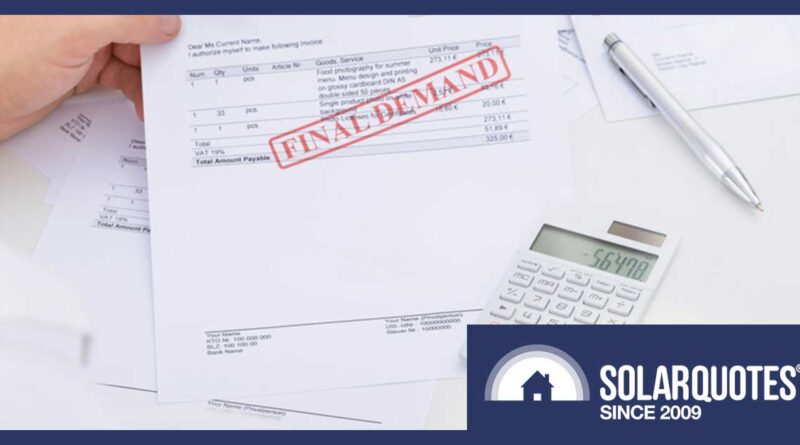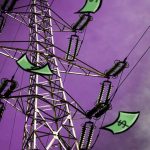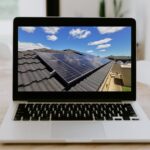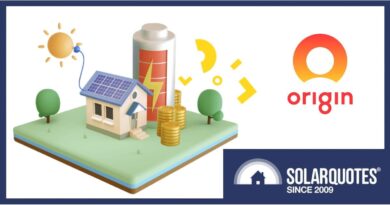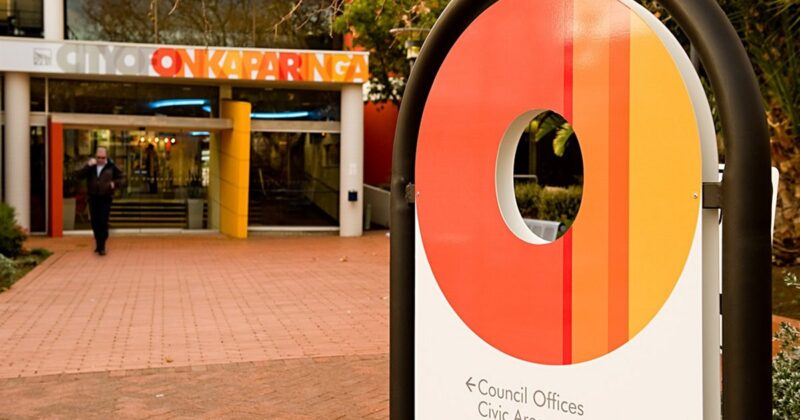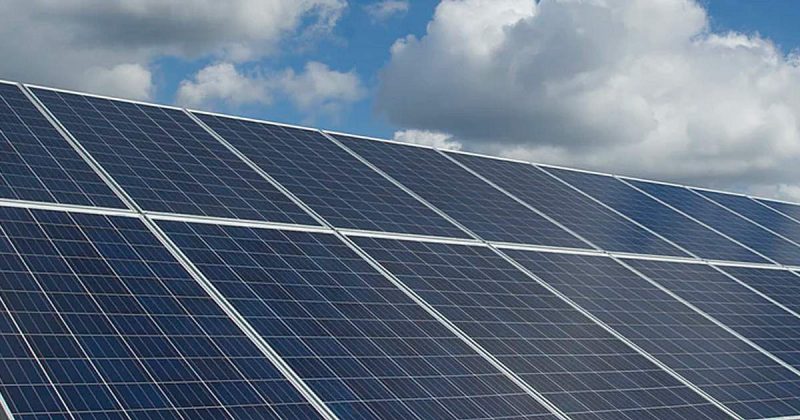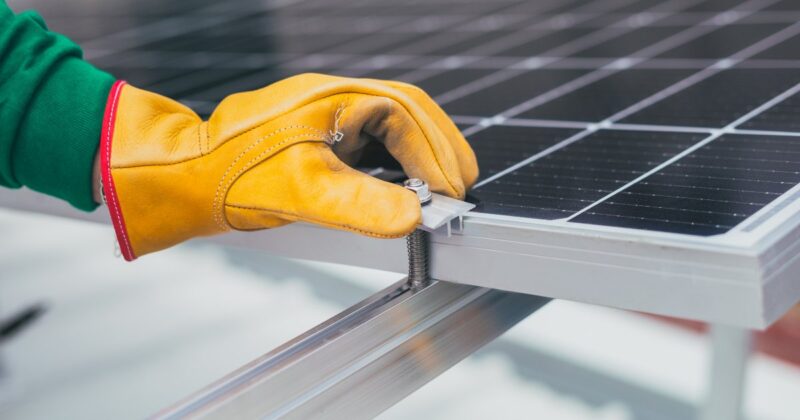How Solar Can Help Small Business Avoid Crippling ‘Large-User’ Tariffs
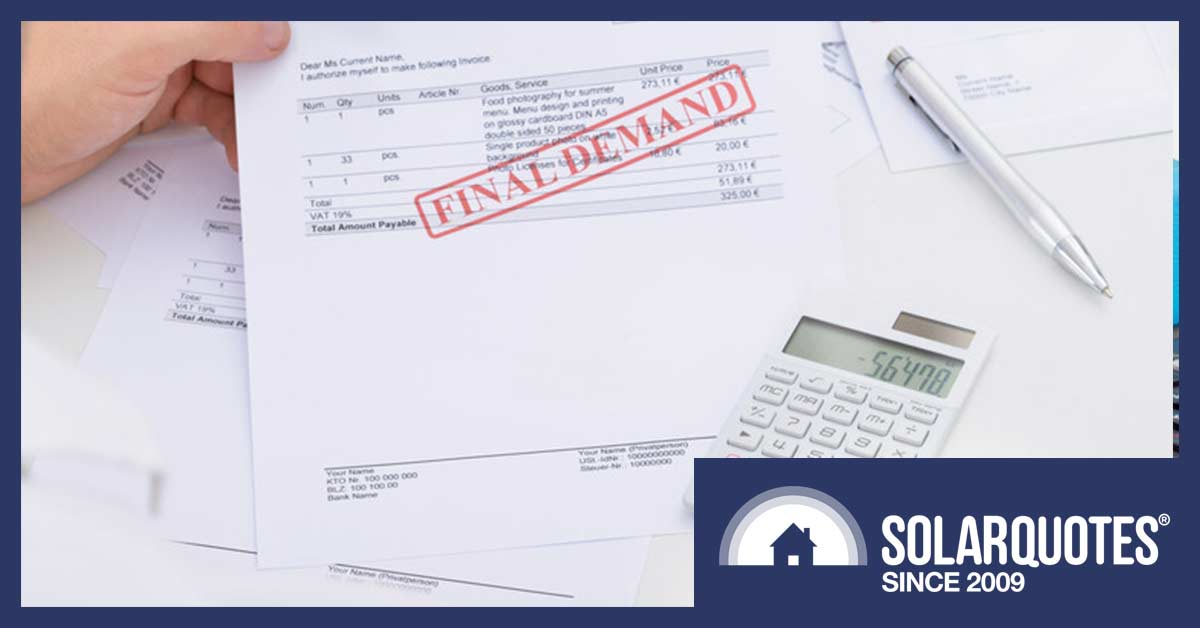
This is essential reading if you’re a business owner who doesn’t like paying through the nose for electricity.
The benefits of having commercial solar are clear to most, but sometimes there are other reasons that aren’t so obvious unless pointed out. In this case, if you’re a business owner, it’s not just the solar power that creates the savings. The other part of the equation is your reduced grid usage, which can keep your business under the threshold that would otherwise class it as a ‘large market customer’.
Why is that important? Because a large market customer is subject to different rules by the network, and can pay more for every unit of electricity than the small market customer next door. It’s like creeping into the next tax bracket, without the benefit of earning more money.
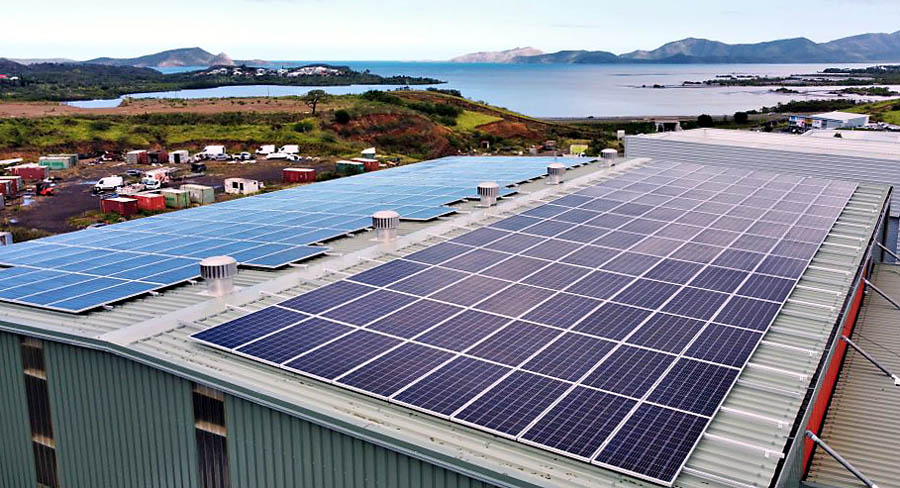
It’s quite possible this business owner isn’t just trying to save the planet. Image: Eco Green Solar
The Detail
How do I know this? Because I talked to an expert. Sharon Musker is a business energy strategist and director of WiseUp Energy Solutions. She spends her days helping business owners understand and plan their energy use to improve the bottom line.
Sharon says: “We’re that conduit between the electricity retailer and the customer. We help them manage their energy costs by analyzing how and when they use their power, and giving options to reduce costs. We plug in the holes because there’s a lot of holes in the market that customers are just not aware of.”
Due to the unprecedented volatility in the energy market in recent times, Sharon is a very good friend to have.
“Up until about March 2022, prior to the war in Ukraine, and the resulting increase in coal and gas prices, it may have been probable that there was a lower overall cost for a business to go on to a Commercial and Industrial (C&I) contract. However, the strategies that we were using ten months ago have been completely reversed.”
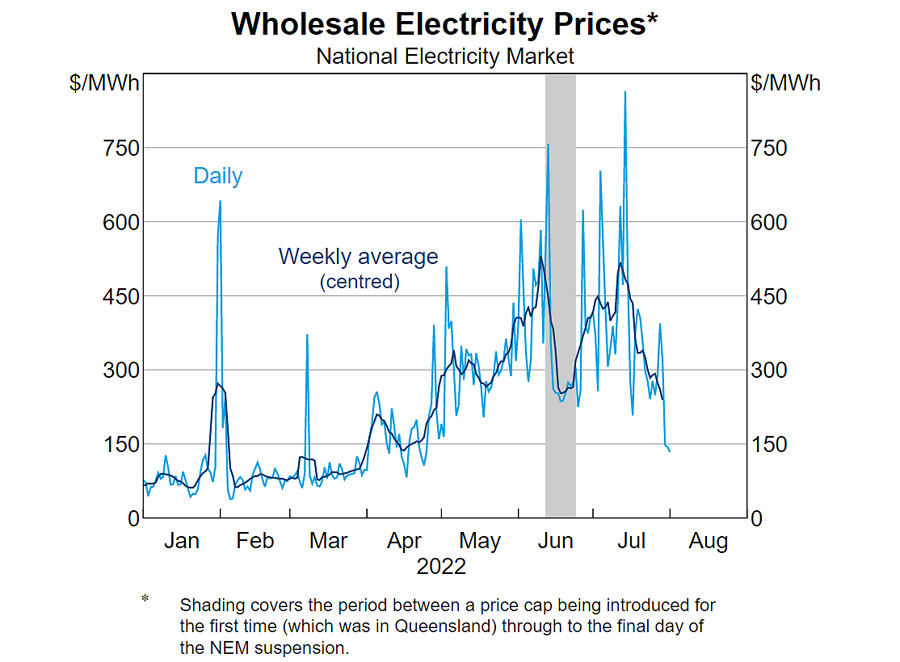
Wholesale electricity prices to August 2022. Sorry, I don’t have a crystal ball to show the effects of the current government intervention (December 2022). Image RBA
Does This Apply To Your Business?
It’s not the size of your business, but the size of your grid electricity consumption that deems whether you’re classified as a small business or large commercial contestable customer.
In Southeast Queensland, if a business uses more than 100 MWh per annum, the distributor will classify it as a large market customer. However, every state in Australia is different.
Every electricity distributor network has different rules, different fees and charges. Every business is different in how they use their energy, and most likely, what they’re paying will be different.
What’s That Got To Do With Solar Power?
Installing commercial solar may be one of the quickest, lowest-cost solutions to lower your grid electricity usage, and prevent being forced into the unpredictable world of C&I contracts. I’ll let Sharon explain with this example:
ABC manufacturing business has installed some large machines and all of a sudden their usage has gone up. They might be sitting on just above that 100 MWh for the last 12 months. The distributor will flag that business, reclassify them as a large market customer, and send them a letter. The problem is that the customer doesn’t know the difference, and doesn’t act upon the letter because they’re not sure what they need to do next.
The network will then advise the retailer. Generally, the retailer will then change the customer’s tariff to a large tariff. That can often increase the bills substantially. When the first bill comes the customer calls the retailer and asks why their bill has gone up. The retailer says “because your tariff has changed”.
They’ve gone from a small business customer on an energy plan (who can change plans at any time without penalty) to a large customer overnight. As a large customer, you can’t just change energy plans or move retailers. You need to negotiate a new C&I contract.
The contract locks in the peak and off-peak rates and you can choose the term, generally between 1 and 5 years. The rest of the line items are all to do with the network charges, environmental levies, metering costs, and any other associated costs such as broker and regulatory charges.
ABC Manufacturing who used to have a relatively small bill of $15K per annum, started to use a bit more energy, got a letter from the network saying they’re now a large market customer, don’t know what that means, got the first bill, tariffs have changed, now have added demand charges on the bill that they’ve never seen before, don’t know how that works, then all of a sudden that $15K has gone up to $40K per annum.
How Can Installing Solar Prevent Being Moved To A Large Customer Classification?
It all comes down to understanding your consumption. If we can see that your consumption is going up because you’ve changed the way you’re doing business or installing new machines, or simply got busier, then we can flag and see that increase, and if you’re about to tip over that 100MWh per annum, what’s next?
Is that something that’s going to continue, how much more energy are you going to use, or is it just a one-off? For example, you may have had a big contract, or had a tenant using some of your power. There are lots of reasons why an increase may have happened, but it’s to determine what happens next. If that increase is going to continue we need to see what cost-effective measures can reduce overall consumption.
At that stage, solar power will be one of the quickest, lowest-cost solutions to make that happen. Not making a decision is the worst decision because, at that point, if you don’t decide to put on solar panels, you will end up in this crazy world of a commercial contract. It’s not something that you can get out of without costs.
It’s protecting the customer from the drama of being on that contract, but also helping them understand what’s driving their energy costs. So they’re more in control of the decisions, to make a balanced judgment of that solar investment based on “if we don’t do this, then that is going to happen.”
It’s not like a salesman is knocking at the door trying to sell them some solar. Now the customer has the data and can see it for themselves. They have a reason and a plan. Often, however, you can lead a horse to water but sometimes it’s when the horse has bolted that we have to come in and put out the fire.
Some customers haven’t acted quickly enough so have had to enter into a C&I contract for a short term while they install solar and then we have had to reverse the classification process. Eventually, we’ll get those businesses back to being small market customers, but it all takes time which could have been avoided.
Data-Driven Decisions
Sharon developed a ‘Solar Ready’ review for business customers to help them make informed data-driven decisions. She doesn’t go into the solar system specs at all. It’s purely “what if you installed XYZ sized system, compared to ABC sized system”, and how would that affect the bills/ contracts?
The table below is for a client classified as C&I using 161,000 kWh a year.
- We compared 12 months of meter data, so we knew exactly what was being used. Then compared the impact of installing a 50 kW system vs a 75 kW system.
- In both cases, the addition of solar reduced their usage significantly but the 50 kW system was a better fit and a lower cost.
- We recommended that the client take just a one-year contract. The plan is to reclassify shortly after the solar installation and change the tariff. When the contract end date is a little closer, we will not re-contract and rather move them to a small market account.

WiseUp solar-ready chart. Image: WiseUp Energy Solutions
Next Steps
Changing these classifications and tariffs doesn’t just happen automatically. There needs to be intervention to get a better outcome. Here are four easy steps to take to prevent being moved to a contestable commercial tariff:
1. Look at your usage
Make a list or a spreadsheet of the last 12 months of electricity bills. Is that likely to increase or decrease? What are you paying for that energy? Is that likely to increase or decrease? What type of meter do you have?
2. Engage a professional
This could be an energy efficiency auditor, energy consultant, or better still, someone like Sharon – a business energy strategist, with experience across the board in energy efficiency through to energy markets. Or – go it alone (at your own peril).
3. Get solar power based on a strategic plan
You could start getting some quotes for solar yourself, but beware! If you get a quote before making a plan, it may not be a fit-for-purpose solution.
Sharon says “I would urge them to give the same information to all suppliers. There needs to be a scope. What often happens is that the quotes will be vastly different because there hasn’t been a scope.”
Are you trying to simply stay under the small business threshold, or are you putting on a large enough system to feed back to the grid? Are you trying to cover your increase in demand due to up-scaling machinery, or are you putting in twenty EV chargers for your staff?
4. Follow up and review the plan
Signing the paperwork with the solar installer is only part of the journey. The follow-up is also important. There’s the current state (before solar panels), and the post-solar future state, which may be a different path.
What needs to be done once that solar power system is installed, and who will do it? Is it the solar installer, the retailer, the customer, or a third party?
“What’s often forgotten is that there is a process. We have come across several commercial solar systems that have never been turned on! Moving forward, if you haven’t got a handle on things now, the future is going to be really tough as we move towards net zero. You need to know what you’re doing now.”
So here you have it. Wise words from Sharon Musker. If you think any of the above applies to you then don’t drag your feet. As Sharon says – not making a decision is the worst way forward.
Original Source: https://www.solarquotes.com.au/blog/solar-large-user-tariffs/

